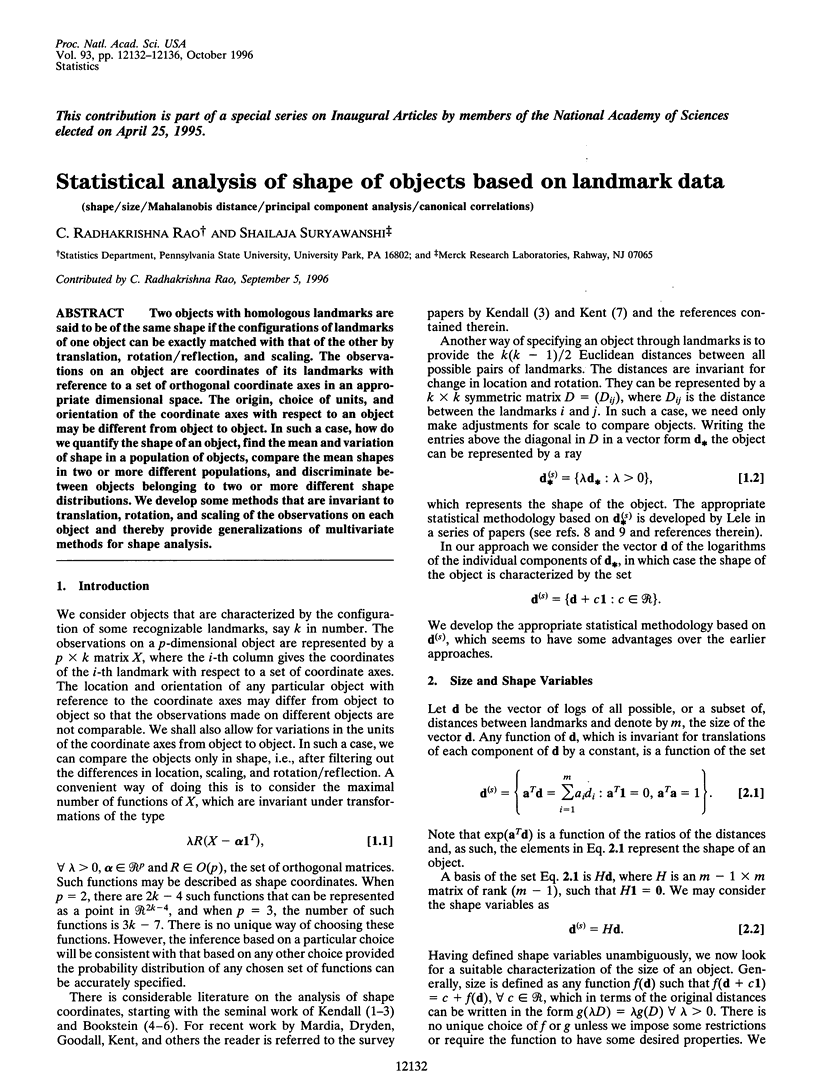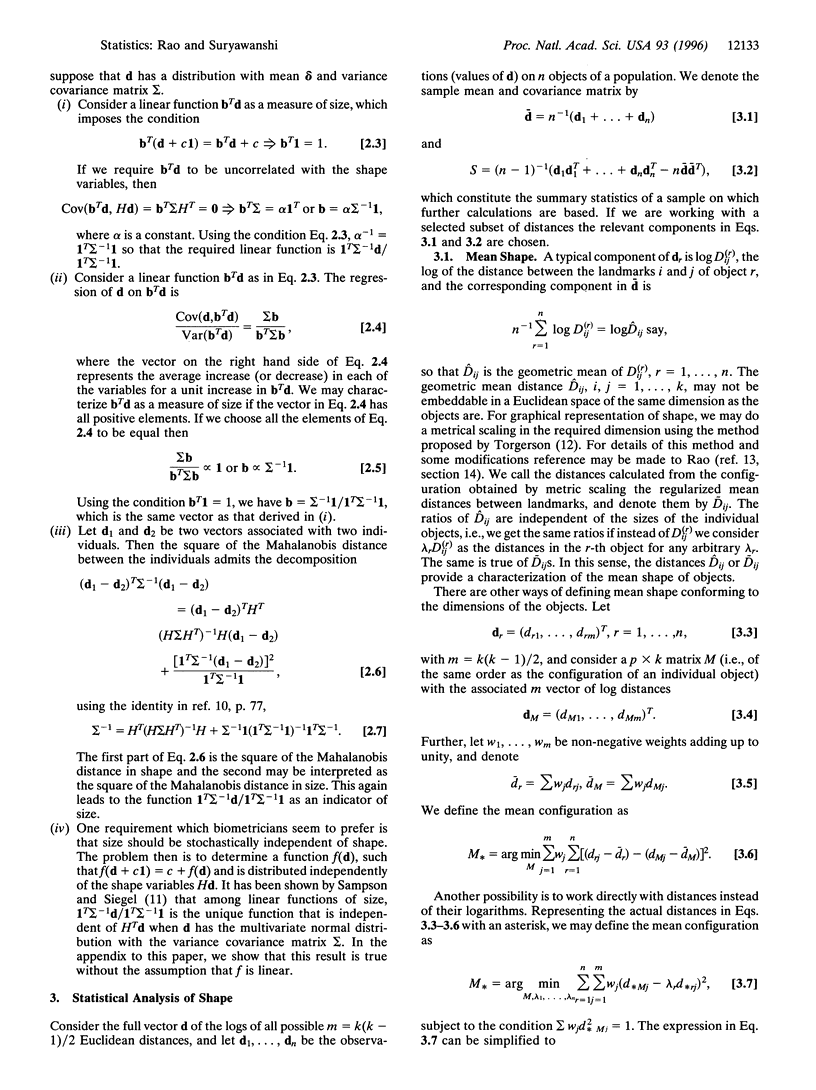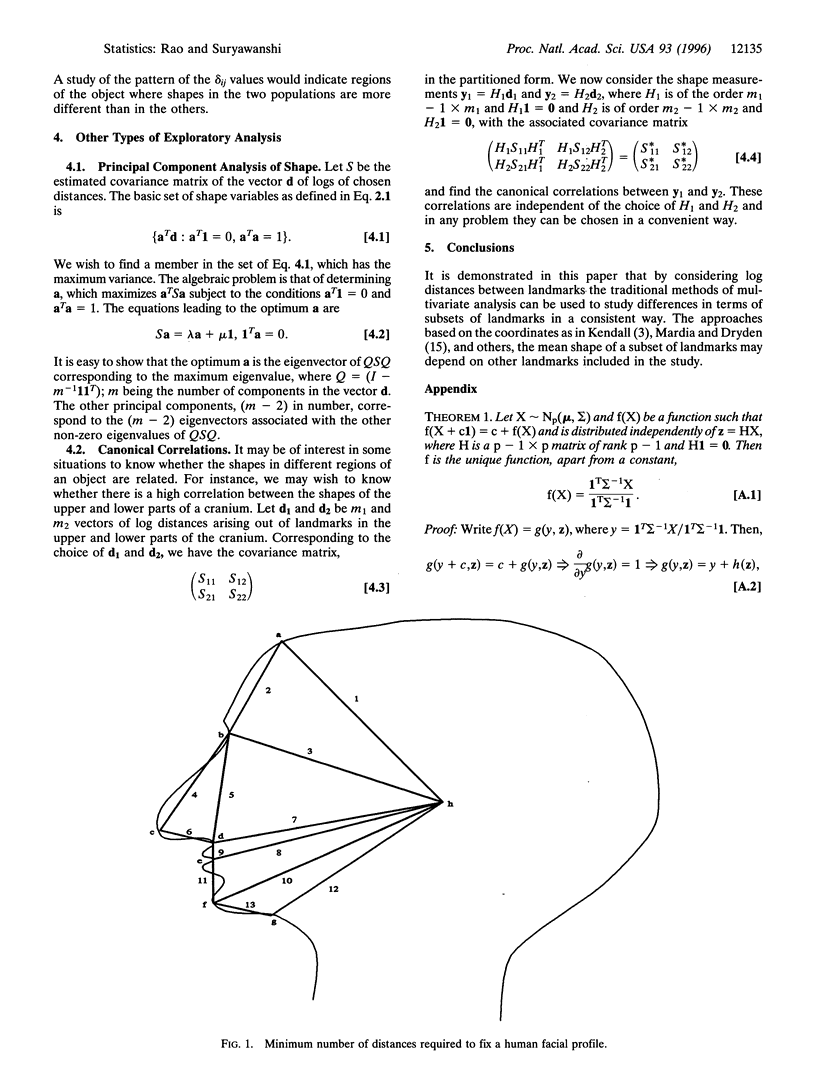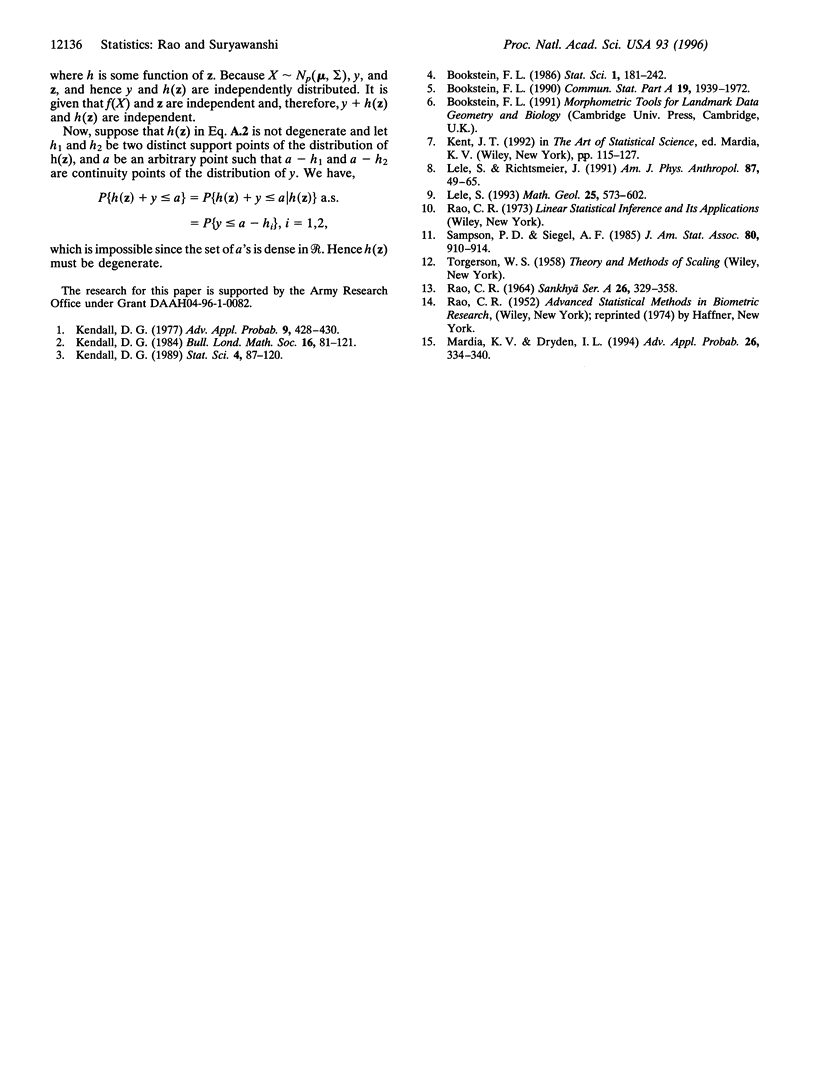Abstract
Two objects with homologous landmarks are said to be of the same shape if the configurations of landmarks of one object can be exactly matched with that of the other by translation, rotation/reflection, and scaling. The observations on an object are coordinates of its landmarks with reference to a set of orthogonal coordinate axes in an appropriate dimensional space. The origin, choice of units, and orientation of the coordinate axes with respect to an object may be different from object to object. In such a case, how do we quantify the shape of an object, find the mean and variation of shape in a population of objects, compare the mean shapes in two or more different populations, and discriminate between objects belonging to two or more different shape distributions. We develop some methods that are invariant to translation, rotation, and scaling of the observations on each object and thereby provide generalizations of multivariate methods for shape analysis.
Full text
PDF




Selected References
These references are in PubMed. This may not be the complete list of references from this article.
- Lele S., Richtsmeier J. T. On comparing biological shapes: detection of influential landmarks. Am J Phys Anthropol. 1992 Jan;87(1):49–65. doi: 10.1002/ajpa.1330870106. [DOI] [PubMed] [Google Scholar]


